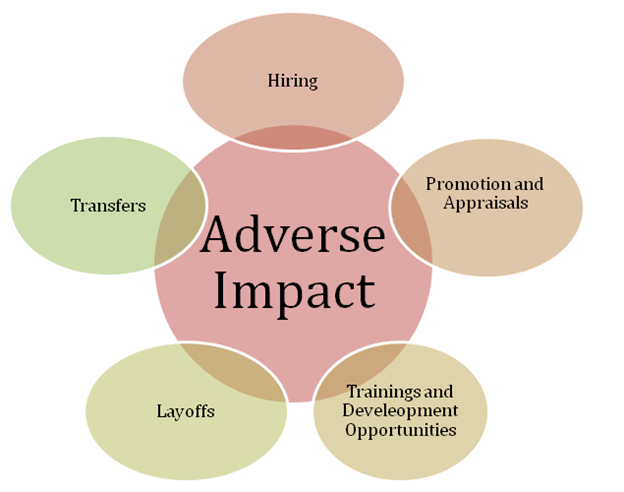The international bill of human rights mentions some of the basic human rights including “the right to equality and freedom from discrimination”. This demands ensuring fair practices at the workplace when it comes to hiring, promotion, and other opportunities.
Organizations need to consider this human right while developing their HR policies because it guarantees numerous benefits for both the organization as well as the employee.
Research shows that a happy employee is a productive employee. When employees feel safe about their sex, religion, age, and race, they develop a sense of responsibility and loyalty to the organization. Their productivity level increases, and turnover rate declines.
For the state, ensuring fair practices at the workplace is significant because government bodies want the circulation of wealth and a better standard of living for all of its citizens.
However, despite abiding by the laws to avoid any intentional discrimination at the workplace, some unconscious practices can cause biases during the recruitment process and employment. This is called adverse impact.
Let’s understand this concept in detail and learn about some adverse impact examples so that as a hiring manager you can introduce changes to your processes to tackle these situations.
What is Adverse Impact?
The Adverse impact may take place intentionally or unintentionally whenever an organizational practice, policy, or decision negatively affects a particular group of people or an individual. Usually, this discriminatory treatment exists in the following HR processes.

The Significance of Measuring Adverse Impact
The measurement of adverse impact is necessary for the HR professionals for the following reasons.
- To identify the discriminatory practices and make the recruitment process fair for everyone.
- Helping HR individuals to overcome their conscious and unconscious biases during the recruitment.
- Building a diverse, creative, loyal, and innovative workforce.
5 Examples of Adverse Impact
Some common examples of adverse impact are as follows:
1. Advertising the Job to a Limited Audience
Nowadays, organizations mostly advertise through online advertisement channels. Discrimination may arise in job-related advertising in various forms such as:
- Explicitly programming the system to show the ad less often to females.
- Using job titles that are gender-specific such as waitress, salesman and manageress all of which are terms that fall foul of the law.
- Writing Italian rather than “Italian speaking” when that language skill is required.
- Writing words such as “youthful” or “mature”. All these terms could be seen as excluding someone from applying for a role based on their age.
- Using gender-specific pronouns in your job advertisements.
2. Interview Questions that Lead to Biases
Some conscious or unconscious biases may happen during the interview such as:
- Asking the minority applicants more questions compared with the general population.
- Showing more inclination or leniency based on gender.
- Considering physical appearance, complexion, or ethnicity more into account while putting up questions.
3. Biased Dress Code and Grooming Policy
Employers around the world usually set guidelines about attire that is appropriate for their business. However, sometimes they become too particular about how women or men should dress up. This can sometimes contradict with the religious beliefs of certain groups such as Muslim women being discouraged to cover their heads. Or sometimes employer grooming policy focuses too much on clean shave for men which may create an adverse impact for those who want to keep a beard as a religious obligation.
Other common adverse impact examples include when black women or Sikh men need to alter or cut their natural hair. Another example is having a dress code or grooming policy where one gender feels more burdened than the other. For example, too many grooming laws for women than men.
An employer may have to face discriminatory charges if they are unjust or impose any undue restriction on the employees.
4. Too much Focus on Referral Hiring
Nowadays, organizations are taking the advantage of referral hiring. No doubt this can bring a lot of benefits but there is a tendency of creating adverse impact as a result of referral hiring. This is because there are chances that the employee will refer candidates of the same race, religion, national origin or any other protected class. One of the most common examples is Asian employees recommending Asian applicants when making referrals.
5. Discrimination Due to Marital or Relationship Status
Discrimination based on a person’s marital status usually happens because of common perceptions about their status as single, divorced, or married. An adverse impact example under this category is when a preference is given to single applicants or men because married women are perceived as less committed to the job and there are more chances that they seek maternity or childcare leaves, etc.
How to Avoid Adverse Impact?
- Analyze the job requirements for each position so that you can develop an unbiased selection criterion.
- Ensure process standardization within each hiring step. This requires documenting everything so that you have something to refer to in case the organization is alleged of job refusal due to adverse impact.
- Understand and implement the Four Fifth Rule. This means to keep a monitor that the success rate/selection rate of any particular group such as men is not lesser than 80% of another group (Women).
- Make sure your testing procedures and assessment systems are fair. You also need to train your assessors on ethical standards as well as on equal opportunity, diversity, and employment laws.
- Make sure that the Interview questions are structured and based on competency.
- If your interviewers include more than one individual, try a diverse group so that there are fewer chances of inclination to certain applicants based on sex, race, or ethnicity.
- Use standard interview questions and the whole process should be recorded. This will create a psychological impact on the interviewers to stay focused on the standardized question set.
- Check your job advertisement thoroughly before posting. Make sure you can reach a diverse pool of applicants using multiple job posting channels. Also, make sure your advertisement content is unbiased and does not focus too much on nationality, gender, and physical appearance. Make neutral job ads with neutral pronouns. Also, make sure that you don’t include images and details that are discriminatory.
- Avoid strict dress codes or grooming policies. Give your employees some freedom about what they want to wear as long as it does not breach standards of modesty. This will help thrive a more open and safer workplace.
- Promote slogans within the workplace to avoid discrimination. If something becomes an organizational value, there are more chances that people develop more awareness and sensitivity to apply those rules at the workplace.
Conclusion
Avoiding adverse impact is one of the major success factors for any organization in terms of advantages that it may bring including productivity, fairness in HR practices, diversity, and innovativeness at the workplace. The adverse impact examples shared above will help you know how similar situations at the workplace may arise and how you may avoid them, thus promoting equal employment opportunity and diversity at workplace.


